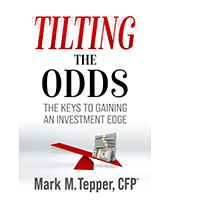Is the Banking Crisis Over?
That seems to be a pretty common question, out there. We had a few banks go under, then it’s been quiet. Are we done? I think bank failures are the wrong focus, really. Could there be more bank failures? Sure, but what we should really be focused on is the effect on the broad economy and the market reaction.
To my mind, the damage has already been done, we just haven’t seen the bodies, yet. Fundamentally, recent bank failures helped accelerate deposit flight out of banks and into friendlier instruments like money market funds, for the very simple reason that the spread between money market and bank deposit rates, at around 4%, is higher than its ever been, at least going back to 2000. Welcome to the chaos of duration risk and interest rate volatility. To oversimplify things, you can’t offer 4% rates when the government encouraged you to own Treasurys yielding 3%.
In turn, the combination of deposit flight and tightening financial conditions is where the rubber really hits the road. When your deposits leave, you can’t lend. Small banks are a category that encompasses the vast majority of banks. They are responsible for a great deal of lending in our economy, and they’re slamming on the brakes. On the latest data, loans and leases, commercial real estate, and consumer loans activity has all slowed to a crawl and commercial & industrial loans are negative.

Looking at industry-level data, the trouble also looks bad. Venture capital was already slowing down, but with Silicon Valley and its ilk running into trouble, the first quarter saw the least money raised in three years. Banks are starting to pull funding from auto dealers, with inventory lines of credit getting pulled. Syndicated loans were down 43% last quarter. Apartment sales were down 74%. Morgan Stanley is talking about Commercial Real Estate (CRE) prices dropping 40%.
Along these lines, we know that market liquidity is a problem and will be for a while. Rates are still on the rise, QT is taking place, money is leaving the system for the safety of money markets, and eventually the Treasury will re-fund itself. The question is how quickly it becomes a problem.
Most of the time, markets send the message that there’s a problem. Thus far, we haven’t seen much market stress. In general, the market seems to be hotly anticipating the next sweet, sweet injection of Fed accommodation, rather than acting concerned. That’s an impasse, as, currently, it’s going to take the Fed a long time to get the message there’s a problem.

There’s a fair amount going on this month. Earnings are starting, and we can start hearing about stresses. CPI is this Wednesday, where we can see if the inflation picture is getting any better. Perhaps more important, though, is the question of what side-effects we see from this ever more rapid tightening of financial conditions. Realistically, the Fed isn’t going to panic in this situation unless markets really panic.
Can we see markets start to panic? There’s plenty of potential problems that could spring up in the months ahead. Considering we’re around the top of the downtrend the market’s seen over the last ten months or so, this doesn’t seem like a great time to take on much risk. That doesn’t mean anything has to break, just that the potential is there and that doesn’t seem to be priced in very well. We’ve started to see a shift away from cyclical and towards defensive stocks recently, which seems pretty reasonable. So is the bank crisis over? Whether or not we see more bank failures, the problems from the crisis are very likely to persist.
 Enter your information below, and we will email you our new eBook, Tilting the Odds
Enter your information below, and we will email you our new eBook, Tilting the Odds




